Most Popular
Korean History
-
1
2014 ferry disaster left scars that never healed
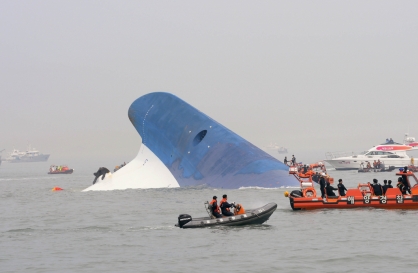
-
2
In 2012, K-pop makes leap from 'Gangnam' to the world

-
3
Deadly sinking of Navy ship in 2010 marks worst postwar military disaster
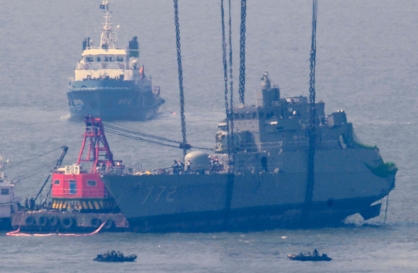
-
4
In 2008, Korea's National Treasure No. 1 went down in flames
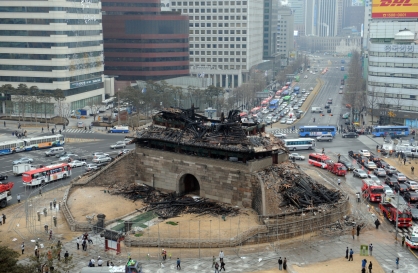
-
5
In 2005, science world’s biggest scandal unravels in Seoul

[Korean History] From 'miracle to debacle': Painful 'IMF days' of 1997-1998
Mired in Asian financial crisis and under IMF-led bailout program, South Koreans endure mass layoffs, corporate bankruptcies and asset devaluation
By No Kyung-minPublished : Sept. 13, 2023 - 16:23
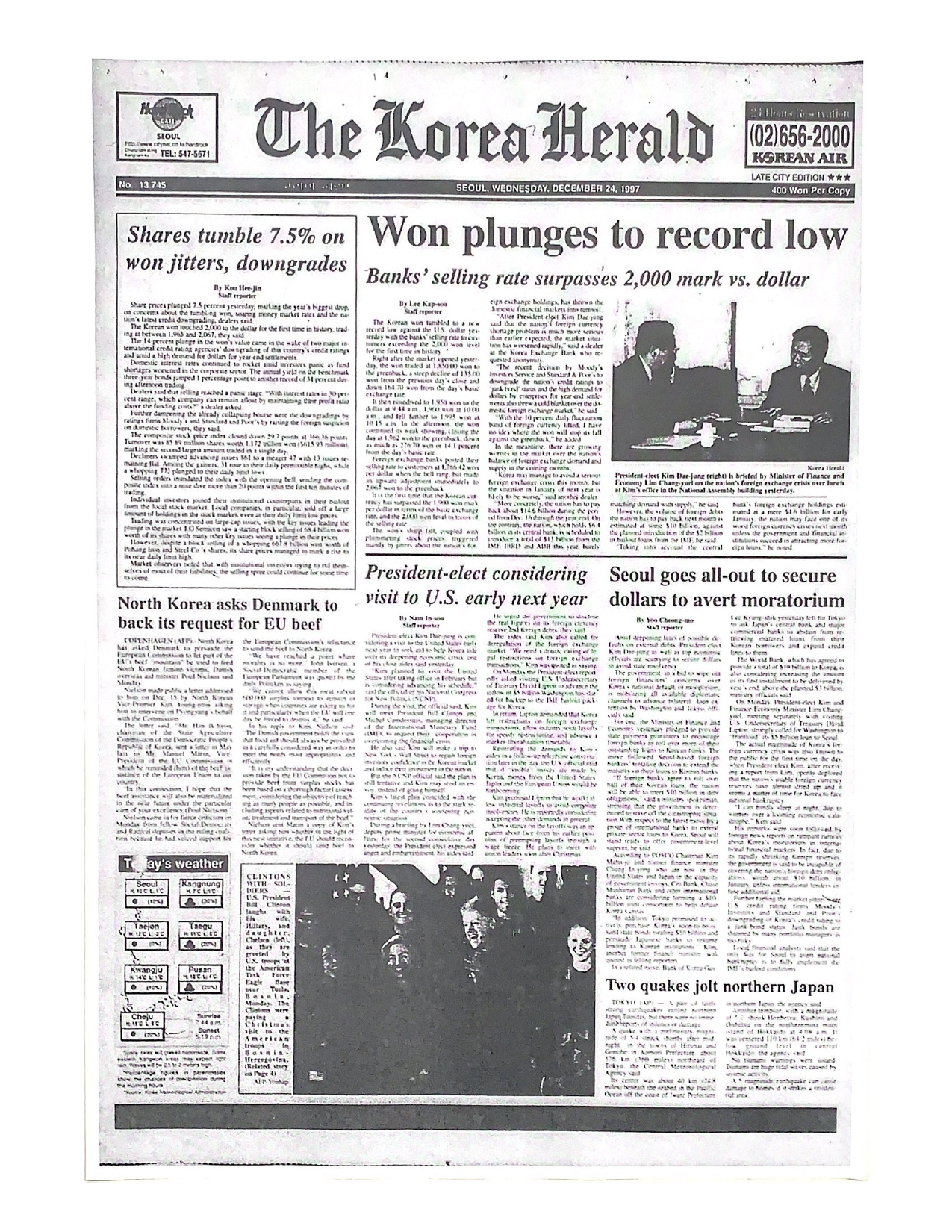
The act of purchasing Christmas gifts was viewed as a luxurious indulgence for Koreans in December 1997, as the nation was beset by deepening economic woes amid the Asian financial crisis.
"Won plunges to record low," was the boldest headline on the Christmas Eve edition of The Korea Herald in 1997, which delivered a news story that was decidedly incongruous with the typical consumerist holiday spirit.
The Korean currency, having significantly depreciated, had plummeted to an all-time low of 1,995 won against the US dollar, breaching 2,000 won per dollar in terms of the selling rate.
Amid sluggish consumer sentiment, there was a notable absence of warm-hearted concern for those in need.
"Not a single institution had volunteered to present gifts to children,” the director of an orphanage lamented, referring to the absence of generous Santa Claus figures that year in an article by local newspaper Maeil Business on Christmas Day in 1997.
Financial shockwaves throughout nation
South Korea's rapid economic growth, which witnessed its gross domestic product per capita soar from a mere $94 in 1961 to over $10,000 in the mid-1990s, screeched to a painful halt in 1997.
In the aftermath of a major recession triggered by Thailand's currency collapse -- which resulted in the baht being depegged from the US dollar in July 1997 -- South Korea faced a severe financial blow in the wake of losing credibility as foreign investors pulled their money out of Korea.
Among the myriad of contributing factors, the primary causes of the nationwide financial turmoil were rising current account deficits, the government's exchange rate policy, debt-ridden Korean conglomerates and banks reliant on short-term foreign loans.
Overconfident businesses and lending institutions -- indulged by short-term loans from foreign creditors -- were exposed to foreign exchange risk, as the government's fixed-rate policy, which was supposed to keep the Korean won-dollar exchange rate within a certain range to avoid extreme volatility, failed to counter the abrupt capital outflow resulting from the loss of faith among foreign investors.
The ultimate collapse of the Korean won's peg to the dollar resulted in a significant depreciation of the local currency's value.
This situation in turn meant greater payments on the part of corporations and loan firms burdened with heavy foreign loans. The government's foreign reserves dwindled, falling from approximately $30 billion to about $4 billion by December 1997, while external debt reached $153 billion.
The financial snafu had far-reaching ramifications throughout Korean society, leading to a wave of bankruptcies among Korean companies of all sizes. Even industry giants like Samsung and Hyundai were forced to adopt austerity measures, including significant reductions in investments and job cuts, in an effort to revamp their struggling economies.
According to a research paper by the Korea Development Institute, the Korean labor market witnessed an almost threefold increase in the number of jobless individuals, surging from 452,000 in October 1997 to 1,378,000 in 1998. Unemployment rates surged by 4.2 percentage points from 2.6 percent in 1997 to 6.8 percent in 1998.
Kim Hyung-jae, a 65-year-old who was employed at Hansol Paper in 1997, underscores his good fortune in avoiding layoffs during the company's restructuring process.
"To stay afloat, my company had to sell its factories at rock-bottom prices to foreign investors who looked like forces coming to occupy my country during the financial chaos,” he said.
"Although my annual income suffered a reduction with no financial incentives, I regarded myself fortunate to retain my job, considering the large number of people who were sacked at that time,” he added.
In April 1998, the Seoul City government’s survey of 553 homeless individuals revealed that more than 50 percent of those living on the streets and in shelters at that time had lost their jobs in the wake of the financial downturn, with the highest percentage of them, at 37 percent, previously members of the working class.
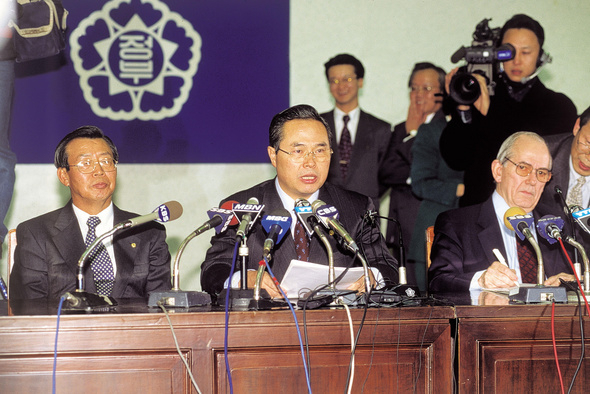
Bailout with heavy strings attached
South Korea found itself with no alternative but to turn to the International Monetary Fund in a desperate bid for emergency financial aid.
After days of negotiations, it reached a $55 billion rescue fund agreement as headlined in the Dec. 4, 1997 edition of The Herald: “Seoul, IMF agree on $55-bil. bailout deal.”
The total rescue package consisted of $21 billion from the IMF; $14 billion from the World Bank and the Asian Development Bank; and $20 billion from individual governments including the US, Japan, Germany and Canada.
The sum marked the largest ever doled out by the IMF, surpassing its $50 billion bailout to Mexico in 1994. Accordingly, the massive financing package came with stringent conditions.
The nation was obligated to implement a series of austerity policies and comprehensive financial and corporate restructuring plans, such as raising interest rates; reducing government expenditures; enhancing labor market and exchange rate flexibility; pursuing trade liberalization; and giving more leeway to foreign investors in the domestic market.
Kim Dae-jung was elected president in late 1997 and sworn in on February of the next year, to take helm of a country in the middle of a crisis. One of the first things he did as president-elect was to downsize the presidential office in December 1997. The outgoing President Kim Young-sam had entrusted the incoming leader with the responsibility of managing state affairs and addressing the crisis ahead of his official inauguration.
The government’s cost-cutting efforts were also palpable abroad, as a retired diplomat in his 70s said, on condition of anonymity, that he experienced the impact of financial hardship as a public official residing in the US in the late 1990s.
“Due to a shortage of US dollars, the Korean government implemented a belt-tightening measure, reducing housing allowances for diplomats by 30 to 40 percent,” he told The Herald.
“While living overseas at that time, I was gravely concerned with my nation’s unstable economic situation,” he added.
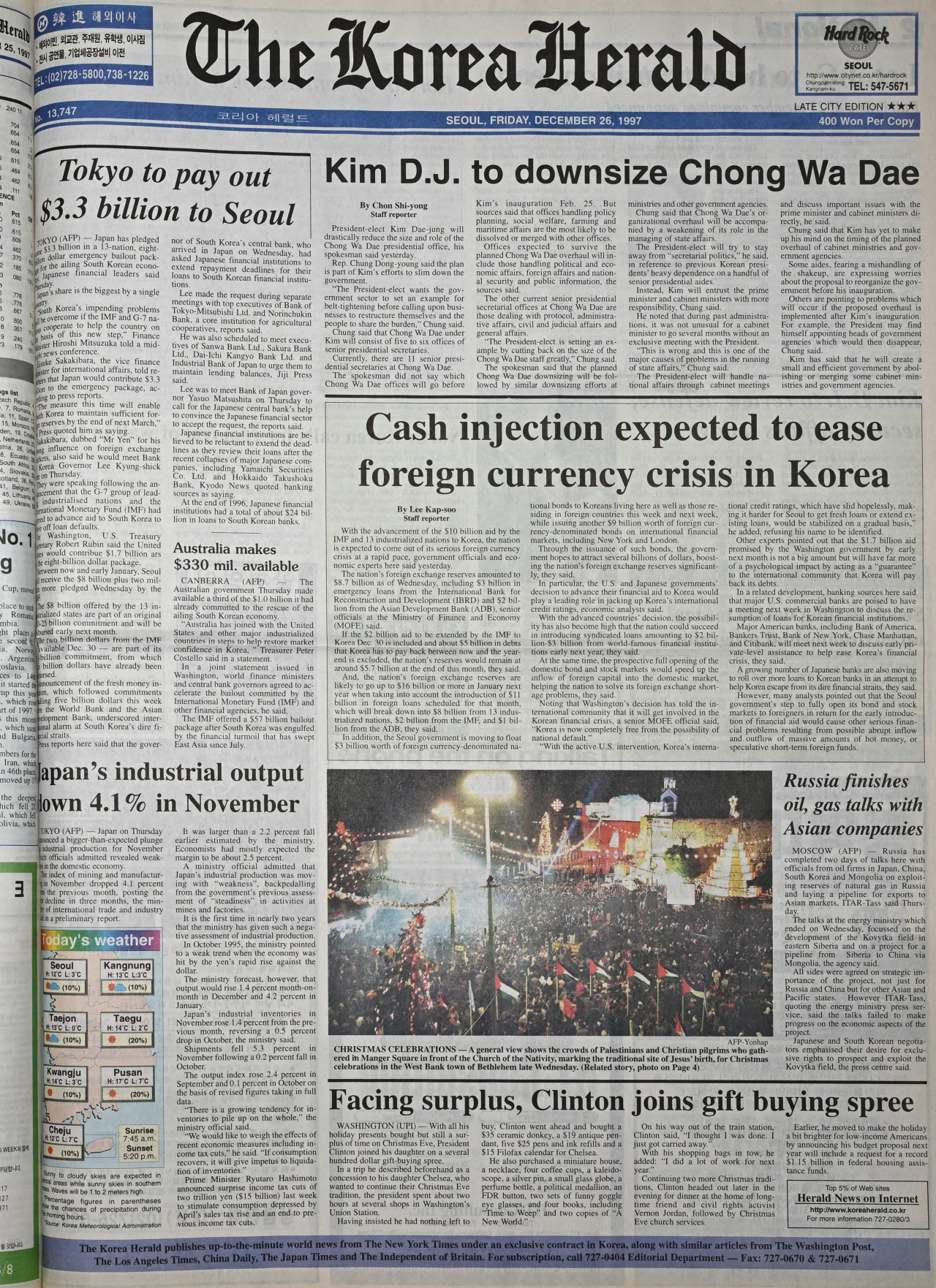
Patriotic gold-collecting campaign
Besides the struggling government and myriad of institutions under the bailout accord, there were also endeavors on civilians’ part -- the most notable movement being the gold-collecting campaign that ran from January to April of 1998.
The nationwide viral campaign encouraged Koreans to sell or donate gold in order to increase the country's gold reserves, which in turn would result in the country's credit rating being upgraded to secure badly needed foreign capital.
The campaign tapped into the patriotic spirit of Koreans, who were eager to see their nation return to stable financial footing. It managed to amass 227 metric tons of gold, equivalent to $2 billion, from 3.51 million participants.
Despite criticisms surrounding corporations selling gold at cheap rates and allegations of some committing tax evasion, the campaign contributed to servicing a portion of the debt to the IMF, as well as lifting public morale through a sense of national unity.
However, the Korean government had to make it through another four years before it could fully liberate itself from the IMF's financial straitjacket.
Out of the $19.5 billion in loans that the government had actually received from the IMF, it paid back the special relief fund of $13.5 billion in September 1999, while the remaining $6 billion standby loan was repaid two years later on Aug. 23, 2001 -- marking the date the entire loan package was repaid in full prior to the maturity date.
On this significant day, then-Bank of Korea Gov. Chon Chol-hwan signed the repayment document and expressed his deepest gratitude to all those who had contributed to the nation's recovery from the financial crisis.
Although the nation held the fifth-largest foreign exchange reserves at the time of $99 billion, his expression of joy was somewhat subdued, as it marked a new beginning for a country still grappling with ingrained financial challenges.
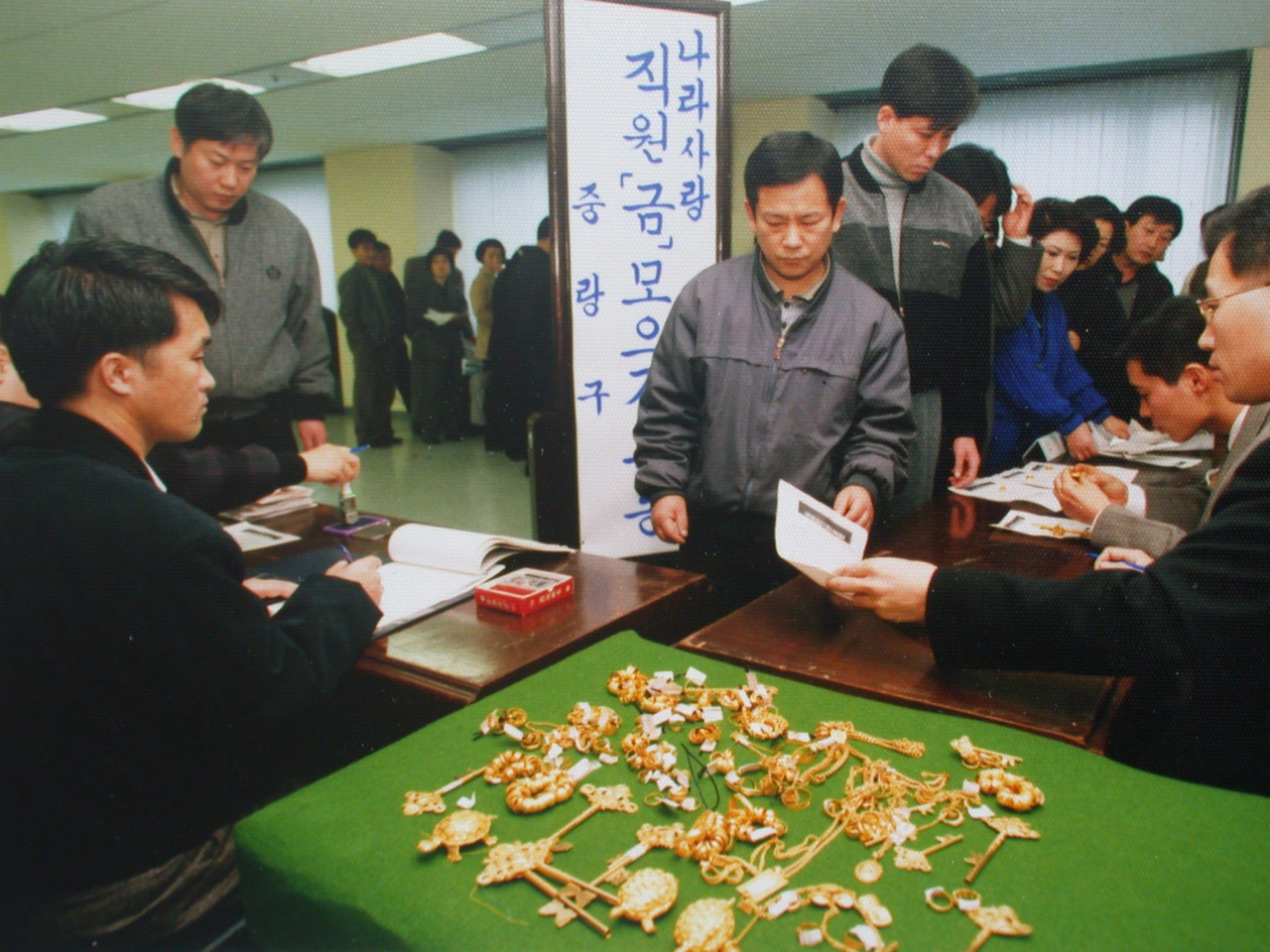






![[KH Explains] No more 'Michael' at Kakao Games](http://res.heraldm.com/phpwas/restmb_idxmake.php?idx=644&simg=/content/image/2024/04/28/20240428050183_0.jpg&u=20240428180321)













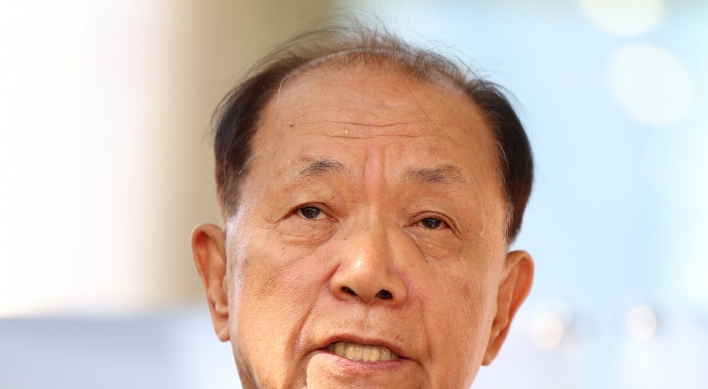


![[Herald Interview] Mistakes turn into blessings in street performance, director says](http://res.heraldm.com/phpwas/restmb_idxmake.php?idx=652&simg=/content/image/2024/04/28/20240428050150_0.jpg&u=20240428174656)
